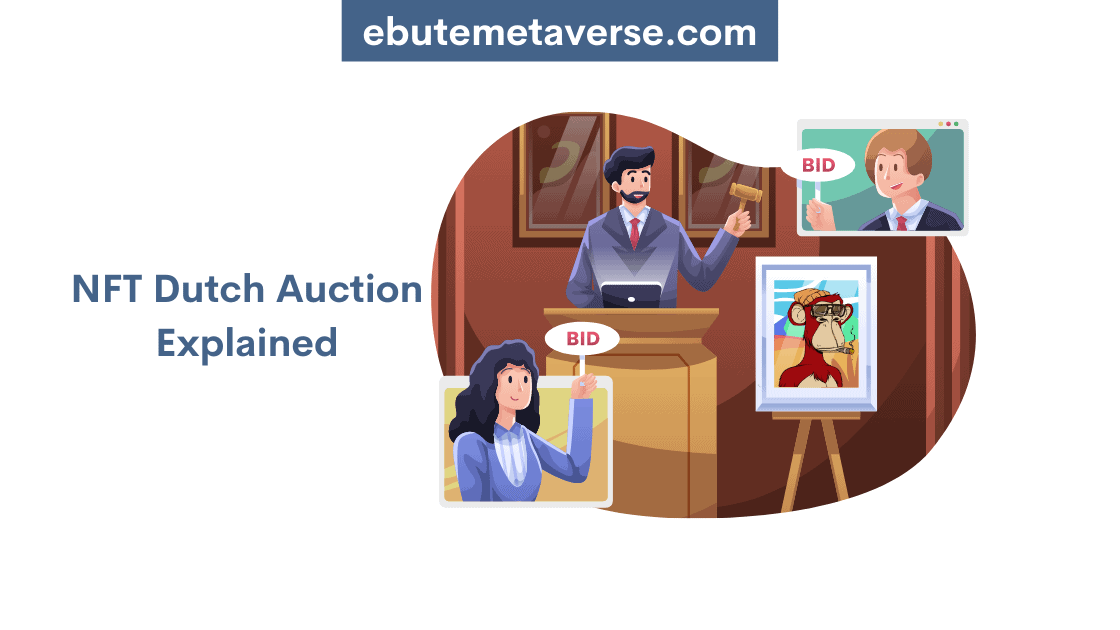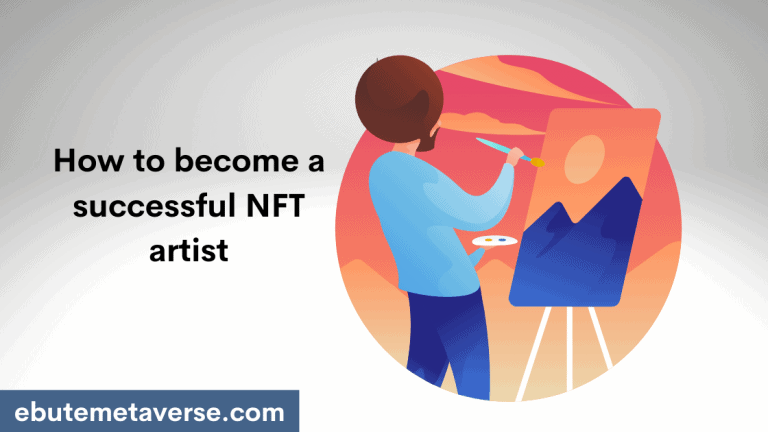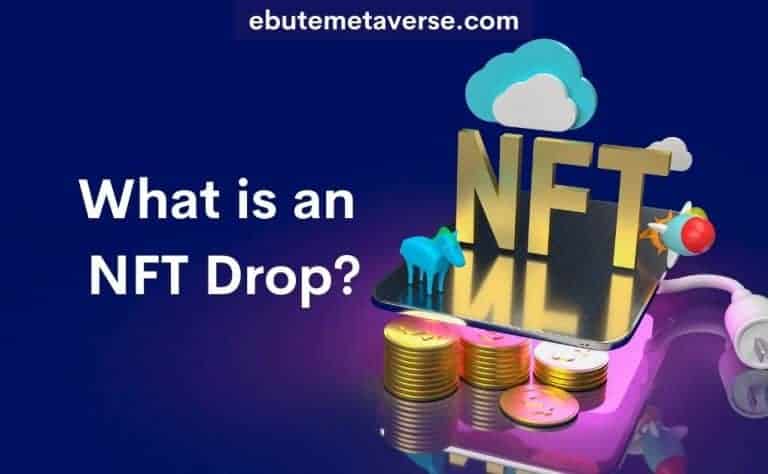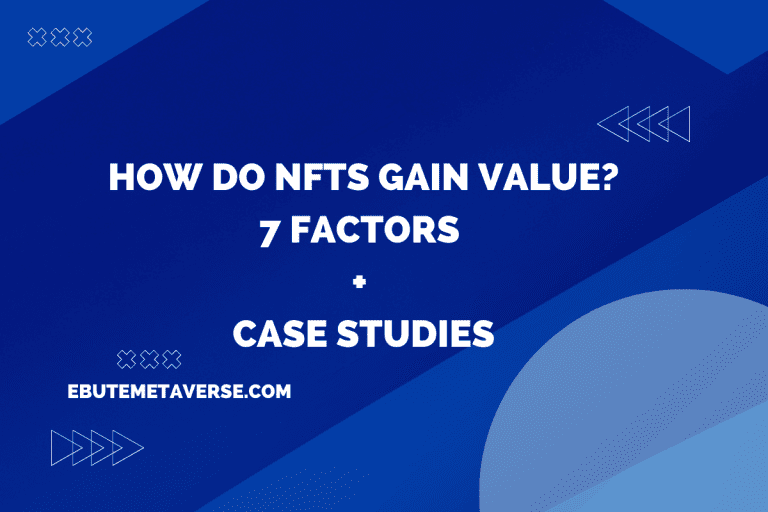Dutch Auction NFT Explained – The Complete Breakdown
When you get started with minting NFTs on popular marketplaces, you will notice they use a bidding method where the prices reduce as time passes. This is the Dutch Auction style, and I will explain Dutch Auction in NFT space.
While it might seem complicated, this article will break down the Dutch auction NFT concept, why most successful NFT artists prefer it, and how to get the best experience when bidding for an NFT.
What is a Dutch Auction NFT System?

In the Dutch Auction NFT system, the price for an NFT starts at its highest price or ceiling price. After which, it starts to drop by a fixed amount until someone eventually buys that NFT.
So, if an NFT is put on auction at 3 ETH with a periodic decrement of 0.2 ETH, it would start going for 3 ETH before reducing to 2.8 ETH, 2.6 ETH, and more. All participants of the auction would bid at a price favorable to them. However, the person that NFT is the one that bids for that NFT before the others.
Let’s break the concept down by explaining a traditional Dutch auction style.
What is a Dutch Auction Style?
Regular auctions start from the lowest bidding price, with each participant trying to outbid themselves by increasing the price. However, the Dutch Auction occurs in reverse, with the item’s price going lower with time.
The Dutch Auction style is an auction system where the auctioneer offers a base asking price for an item and then accepts the highest bids of all auction participants. After considering all bids, the auctioneer sets the highest price for that item, signaling the beginning of the auction.
Although the item starts at a high price, this price experience decreases within set periods. During the price reductions, all participants can place a bid for that item. The individual that gets to own the item is the one that buys it at a higher price.
So, during this auction process, the participants are in a psychological battle trying to buy that item at the highest they can afford. Since the item in a Dutch Auction goes home with whoever bids for it first.
Why do NFT creators use the Dutch auction style?
One of the major advantages of non-fungible tokens is that it allows artists to receive the recognition and remuneration they deserve – one such way is through NFT royalties. So, you might wonder, ‘wouldn’t the NFT Dutch auction style defeat that?’
That would have been the case if NFT Gas fees were not in the picture. Since NFT gas fees exist, many people on a blockchain participating in an auction would lead to gas wars.
This defeats the purpose of NFT. As such, the Dutch Auction style is preferred. But the Dutch auction system ensures that individuals don’t cluster on the blockchain trying to outbid themselves. They would only make a bid when that NFT reduces to a price they can afford.
How do you join an NFT Dutch Auction?

As you have seen the advantage offered by the Dutch Auction style, you can participate in any that catches your fancy.
If you want to participate in an NFT Dutch Auction, you need to visit an NFT marketplace. Some popular options include OpenSea, Rarible, Decentraland, etc. Register with them, search for the NFT auction house on their page and enter it. This will bring up a list of current auctions you can join.
After choosing your preferred NFT, you’ll be redirected to the information page, which contains the current price of the NFT and the subsequent price decrease. You can place a bid on that NFT at any price you can afford (as long as the NFT is still available).
When the system wants to reduce the price, it will check if there’s a bid for that NFT. If there is one, the NFT would belong to that person; however, the price would drop to the next tier if there is no bid.
Frequently Asked Questions (FAQ) For Dutch Auction
What is the difference between the English and Dutch Auctions?
English Auctions start from the lowest price, with participants trying to outbid themselves by offering the highest price for that item. On the other hand, Dutch Auctions begin from the highest price, with the price going down at regular intervals until someone decides to bid for it.
How does a Dutch Auction end?
A Dutch Auction ends when someone eventually bids for that item.
How does a Dutch Auction affect NFT Gas Fees?
A Dutch Auction leads to reduced NFT gas fees since only those interested in purchasing that NFT would be on the blockchain at that point in time.
Do English Auctions occur for NFTs?
Yes, English Auctions are still available in the NFT space, most especially for those blockchains (like Tezos) that offer very low or no gas fees.
Conclusion
Until the developers address the price of NFT gas fees on the Ethereum blockchain, Dutch Auctions would still be the preferred auction format of most artists. If you believe that the English Auction style is still preferable, you can air your views in the comments.


![Can You Get NFTs for Free? Top 10 Ways [Free Mints, Giveaways, and More] 6 Can You Get NFTs for Free? Top 10 Ways [Free Mints, Giveaways, and More]](https://ebutemetaverse.com/wp-content/uploads/2022/11/get-nfts-for-free-768x432.png)
![NFT Image Size: Correct Dimensions for NFT Art [With Examples] 7 NFT Image Size: Correct Dimensions for NFT Art [With Examples]](https://ebutemetaverse.com/wp-content/uploads/2022/11/Correct-Dimensions-for-NFT-Art-768x432.png)



